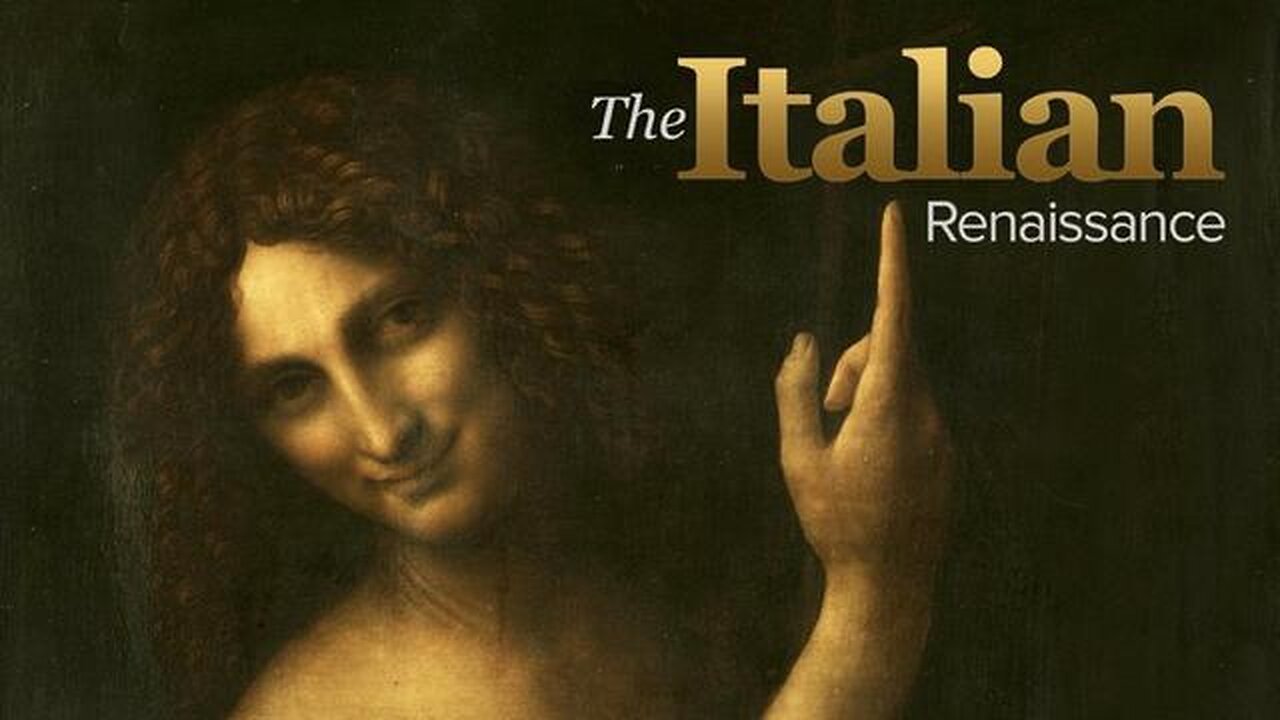Premium Only Content

The Italian Renaissance | Renaissance Venice (Lecture 14)
Lecture 14: Its social and political context meant the Renaissance arrived late in Venice. Looking to Byzantium rather than to Italy, having little motivation to make cultural or intellectual connections with other Italian states, and not seeing itself as a city with a classical Roman past, Venice was isolated from the first appearances of Humanist values in the peninsula. Also, the social structure separated the educated members of the chancery, or civil service, from the dominant political families.
Everything changed, however, after 1380, when Venice decided to expand onto the mainland in order to protect its flank, its food supply, and trade routes. Venice conquered the sophisticated cities of northern Italy, such as Vicenza and Verona, and in 1405, Padua, with its celebrated university. There, Venetians confronted and began to adopt Humanist and Renaissance artistic values. Such architects as Sansovino and Palladio worked in Venice to bring the classical style to maturity. Painters, such as Bellini, Carpaccio, Giorgione, Tintoretto, Veronese, and Titian, developed a unique use of light and color to reflect the atmosphere of the Veneto in which they lived. The wealth of the city meant patronage flourished, and official commissions to adorn public buildings quickly institutionalized this transformation.
Secondary Sources:
Manfredo Tafuri, Venice and the Renaissance.
Patricia Fortini Brown, Art and Life in Renaissance Venice.
Supplementary Reading:
Margaret King, Venetian Humanism in an Age of Patrician Dominance.
Lecture 15: https://rumble.com/v4xlo39-the-italian-renaissance-the-signori-renaissance-princes-lecture-15.html
-
 30:05
30:05
The Great Courses
1 month agoDecisive Battles of World History | 1942 Stalingrad - Hitler's Ambitions Crushed (Lecture 35)
130 -
 1:35:03
1:35:03
Glenn Greenwald
10 hours agoTrump DOJ: There's Nothing to the Epstein Story; State Dept: Syria's Al-Qaeda are No Longer "Terrorists;" Trump & Lula Exchange Barbs Over Brazil | SYSTEM UPDATE #482
165K150 -
 2:18:39
2:18:39
We Like Shooting
20 hours ago $6.18 earnedWe Like Shooting 618 (Gun Podcast)
42.6K -
 2:42:17
2:42:17
Barry Cunningham
9 hours agoHERE'S WHY SOME IN MAGA ARE SO NEGATIVE ABOUT PRESIDENT TRUMP?
85.6K41 -
 1:54:30
1:54:30
Joker Effect
7 hours agoWhy Gaming Streamers Aren't Successful and How To Fix It. Tim The Tatman was RIGHT... Kinda
42.1K2 -
 3:43:25
3:43:25
megimu32
7 hours agoOTS: From Ozzy to Emo 🎸 The Rise & Fall of the Rockstar
27.5K2 -
 1:22:50
1:22:50
Adam Does Movies
10 hours ago $1.54 earnedMovie News Live Taping! + AMA - LIVE!
25.7K -
 1:47:11
1:47:11
EnDuEnDo
6 hours ago🚨Variety Stream 🎮 Push to 600 Followers 🚀 Chill Vibes 😎 Content Creator for @SelfMadeGGs & @SMKAcademy
16.6K1 -
 5:49:58
5:49:58
Spartan
7 hours agoPro Halo Player | Ranked and Maybe SWTOR Later
12.8K1 -
 34:14
34:14
Uncommon Sense In Current Times
11 hours ago $0.78 earnedBlueprint to Rebuild Liberty by 2026 | Rick Green's July 4th Action Plan
10.9K1